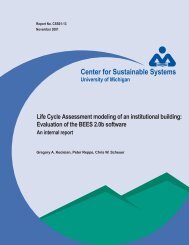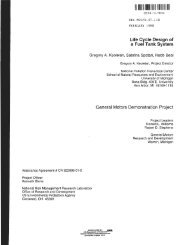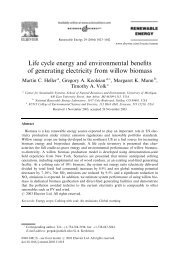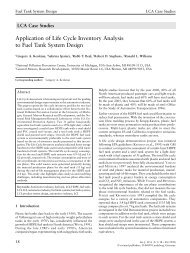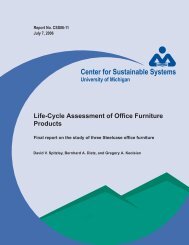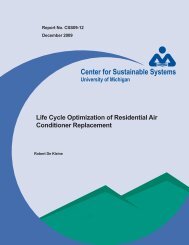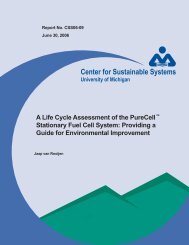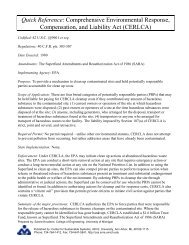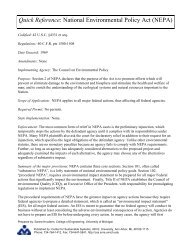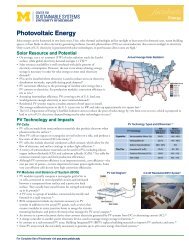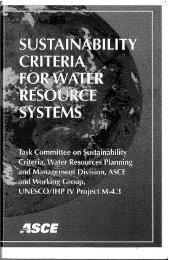Chapter 6 : Sanitary Sewer Overflows (SSOs)
Chapter 6 : Sanitary Sewer Overflows (SSOs)
Chapter 6 : Sanitary Sewer Overflows (SSOs)
Create successful ePaper yourself
Turn your PDF publications into a flip-book with our unique Google optimized e-Paper software.
Wet Weather Benchmarking Report<br />
<strong>Chapter</strong> 6: <strong>Sanitary</strong> <strong>Sewer</strong> <strong>Overflows</strong><br />
Michigan<br />
Elimination of <strong>SSOs</strong> is expected to occur within 10 years of identification of such overflows, with a maximum<br />
of 20 years for communities with funding shortages. The schedule for corrective action is dependent on the<br />
extent of the problem and the ability of the community to quickly address them.<br />
Minnesota<br />
Elimination of <strong>SSOs</strong> is required and is not tied to a specific storm event. The elimination schedule is<br />
determined on a case by case basis, according to causes and negotiated settlements between MPCA and the<br />
regulated party.<br />
Missouri<br />
Elimination of <strong>SSOs</strong> is required and is not associated with a specific storm event.<br />
Montana<br />
Elimination of <strong>SSOs</strong> is required and is not associated with a specific storm event. There is no discrete<br />
schedule for elimination of <strong>SSOs</strong>.<br />
Nevada<br />
Elimination is required and is not tied to a specific storm event. The schedule for elimination varies.<br />
New Hampshire: See EPA Region 1.<br />
New Jersey<br />
NJDEP does require elimination of <strong>SSOs</strong> and this elimination is not tied to a storm event. The SSO<br />
elimination schedule is case specific, dependent on a variety of factors, such as affordability, complexity of<br />
infrastructure deficiencies, and inter-municipal relationships.<br />
New York<br />
Elimination of <strong>SSOs</strong> is required, and it is not tied to a specific storm event. The elimination schedule follows<br />
an internal guideline created for review and approval of SSO abatement plans. For large severe <strong>SSOs</strong>,<br />
“NYSDEC recognizes that abatement measures need to be prioritized and the SSO will take longer to<br />
eliminate.” 50<br />
North Carolina<br />
All <strong>SSOs</strong> are prohibited, regardless of the magnitude of the corresponding storm event. There is no schedule<br />
for elimination of <strong>SSOs</strong>. 51<br />
North Dakota<br />
ND DoH does require elimination of <strong>SSOs</strong>, and it is not associated with a specific storm event.<br />
Ohio<br />
OH EPA does require elimination of <strong>SSOs</strong>, and it is not tied to a specific storm event. The elimination<br />
schedule varies by community.<br />
Last modified on May 5, 2010<br />
6-10



